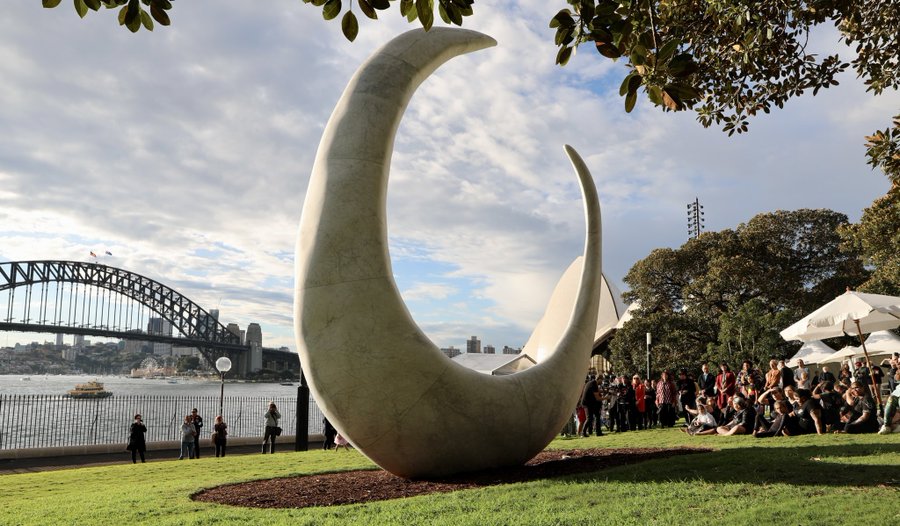It might be premature to suggest that there seems to be a new spirit abroad since the recent election result. At the very least, however, the new Prime Minister’s acknowledgement of First People and explicit commitment to the Uluru Statement in his acceptance speech on 21 May was as heartening and hopeful as it was surprising.
The Uluru Statement is a generous and compassionate invitation for First and Second People to work together for change. In addition, the NSW government has recently announced a commitment to remediate and repair Goat Island in Sydney Harbour prior to returning it to traditional owners in 2026. Finally, the unveiling of bara at Bennelong Point, the fish hook sculpture created by Judy Watson, the fourth project in Sydney’s ‘Eora Journey’.
This was described by Clover Moore as a reflection of the commitment to ‘rebalancing’ the work of previous Australian governments by ‘developing ways to make the world’s oldest living culture a visible and tangible presence’ in the city. In the overall scheme of things, these are all very small gestures but so welcome as symbols of hope and renewal.
Hope is a very fragile thing but especially so for traumatised people and it doesn’t take a great deal of research to uncover similar hopeful commitments that have not actually lived up to or into their original promise.
The 1989 Royal Commission into Aboriginal Deaths in Custody made 339 recommendations to address the issues that it identified and yet, thirty odd years later, Aboriginal people are still over-represented in the prison population and at least 474 Aboriginal and Torres Strait Islander people have died in custody since that Royal Commission. Some of those stories have made headlines.
There is also the Bringing Them Home report of the National Inquiry into the Separation of Aboriginal and Torres Strait Islander children from their families in 1997. Today, Indigenous children are still over-represented in out of-home care. These circumstances alone make the generosity and compassion of the Uluru Statement all the more remarkable. I’m struck by the courage and conviction (in the sustaining power of culture, community and story) that it must take to sustain hope through ongoing trauma and tragedy.
The Uniting Church has made several commitments and statements since it first entered into Covenant with the Uniting Aboriginal and Islander Christian Congress. In particular, the Preamble to the UCA Constitution and the acknowledgement of Aboriginal sovereignty in the lands we now call home. These large statements are important milestones in the relationship between the Uniting Church and First People (always noting that the church was often an agent of policies that damaged Aboriginal families and communities).
The challenge for every Council (Congregation, Presbytery, Synod) and institution in the Church is to add their own purposeful action to bring the Church’s large commitments to life. Without these small actions, the words are just words. Synod 2021 adopted a Walking Together Action Plan as a resource to enable our actions to fit our words. It is really heartening to see the ways that congregations have used this tool to inform their lives and to respond to the invitation offered to us in the Uluru Statement.
Could we match the courage and conviction of our Aboriginal and Torres Strait Islander sisters and brothers to make a real difference and bring hope and renewal to life?













